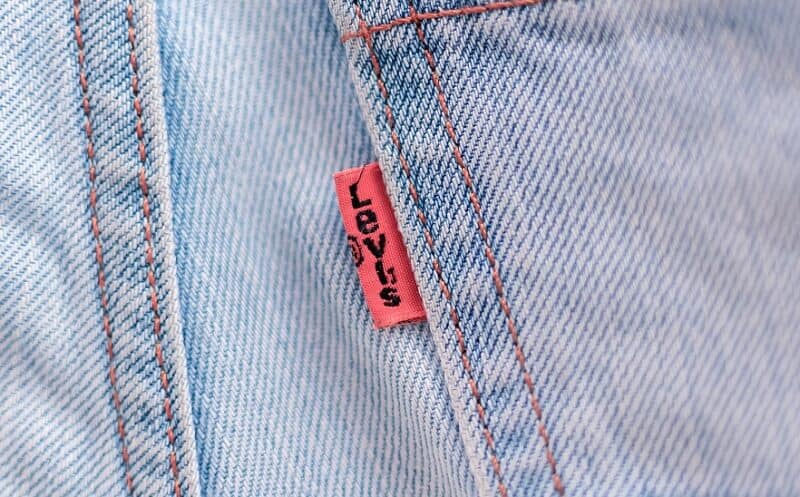
Levi Strauss & Co. trades on the NYSE under the ticker symbol LEVI.
This famous brand promises to be a good investment
By Guy Avtalyon
Levi Strauss is riding again.
We are sure you have several of Levi’s products. When say Levi’s you mean eternity. Levi’s jeans is always IN. This denim cloth producer went public in March this year. The jeans on the trading floor. Sounds good even if it didn’t change the dress-code there. Actually, that decision was the second appearance of Levi’s on the stock market.
Firstly, the company was listed in the 1970s. But 15 years later, the company was taken private. Descendants of Strauss, well-known the Haas family bought it out. In March this year, that decision was changed and Levi’s is listed again on the NYSE under the ticker symbol LEVI. Levi’s started trading publicly for the second time in its 165-year history.
At that time, the shares were priced at $17 and grew 32% in the first trading day. On the closing bell, the price was $22.41 and the valuation was over $8.5 billion.
The LEVI price history
The LEVI price history isn’t long but we can see that it had a few good trading weeks after went public. The price dropped in August and was traded at about $16. In October, the price increased to almost $20 but dropped again at $17 and stabilized in that area.
On November 21 the LEVY was traded at $16.57 which was an increase of 0,20% from the previous day.
The experts’ forecast for Levi Strauss & Co.’s median target at $23.50, with the highest price at $28.00 and the lowest at $18.00. That would be a 41.82% rise from the current price of $16.57. Their estimation shows a buy signal for Levi Strauss & Co. stock.
The forward P/E ratio is 15.49 and P/E growth is 3.79, the dividend yield is 3.62%.
Levi Strauss & Co. posted its quarterly earnings report on October 8th. The company reported $0.31EPS for the quarter, beating analysts’ estimates of $0.27. Levi Strauss & Co. earned $1.45 million during the quarter. The company had a return on equity of 37.44% and a net margin of 6.85%. The revenue was up 4.3% related to the same quarter in the previous year. Levi Strauss & Co. issued its revenue guidance of $5.882-5.909 billion.
Selling of Levi Strauss & Co. stock
The company’s main shareholder Walter J. Haas sold 73,845 shares on Wednesday, November 20th at an average price of $16.53, for $1,220,657.85.
Previously, on November 13th, Walter J. Haas sold 37,290 shares of the company at an average price of $16.96, for $632,438.40.
Two days earlier, on November 11th, Walter J. Haas sold 22,321 shares of stock at an average price of $17.06, for $380,796.26.
On November 8th, Walter J. Haas sold 50,749 shares at an average price of $17.10, for $867,807.90.
Hedge funds have new holding positions in the Levi’s
Commerzbank Aktiengesellschaft FI got a new position in Levi Strauss & Co. at approximately $253,000.
Acadian Asset Management LLC took a new position at around $174,000.
Parallel Advisors LLC took a new position at approximately $96,000.
Aperio Group LLC took a new position at around $62,000.
NumerixS Investment Technologies Inc got a new position at about $58,000.
Institutional investors hold 9.21% of the Levi Strauss & Co. stock.
Experts’ ratings on LEVI
Bank of America boosted its price target on LEVI from $20.00 to $22.00 and marked the stock as a “buy” in October.
Guggenheim repeated a “buy” rating in September.
ValuEngine upgraded Levi Strauss & Co. from a “sell” rating to a “hold” in October.
Levi Strauss & Co. currently has a consensus rating of “Buy” and a price target of $24.43.
About Levi Strauss
The company is founded by Levi Strauss, an immigrant from Bavaria who came to San Francisco in 1850 during the Gold Rush. He brought dry goods for selling to the miners. he recognized the miners’ need for durable pants and hired a tailor to sew clothes out of tent canvas. Denim came later.
A partnership of three Strauss brothers was built in 1853.
After Strauss died the leadership of the company passed to the Haas family. By the 1960s, Levi’s jeans became popular globally. In 1971, when the company went public it was operating in 50 countries.
Levi Strauss & Co designs, and markets jeans, casual dress, pants, skirts, jackets, footwear, and accessories for women, men, and children under the brands: Levi’s, Dockers, Signature by Levi Strauss & Co, and Denizen. The company also authorizes Levi’s and Dockers’ trademarks for many product categories, like footwear, belts, wallets and bags, outerwear, sweaters, dress shirts, kids wear, sleepwear, and hosiery.
Levi’s is a famous brand but the stock needs a price accumulation before it keeps the advance. Anyway, this is the stock to be watched. Its trends in Europe are strong, rising at 20% a year for the past two years and 14% in 2019. Levi proceeds to diversify its distribution in Europe and it is now 50% direct-to-consumer sales. But the U.S. sales are down and now it represents 30% of Levi’s overall sales.



Leave a Reply